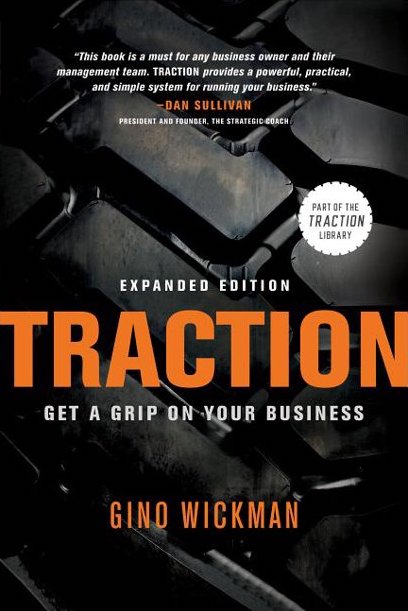Traction and the Entrepreneurial Operating System (EOS)
15 Feb 2021As we grow ROIClear, the leadership team is building the company on a foundation of systems and metrics. Systems enable everyone on the team to speak, listen, and think with a shared language and a common vocabulary. Clear metrics enable everyone to know that the ship is on course. The best metrics also give guidance on self-correction.
Many books offer advice on systems and metrics: E-Myth by Michael Gerber and Scaling Up by Verne Harnish are two well-known titles. After exploring several methodologies, I have chosen to base ROIClear’s systems on Traction by Gino Wickman. ROIClear has great momentum. By refining our tools, we will accelerate our growth.
Entrepreneurial Operating System (EOS)
Traction tells how to implement the Entrepreneurial Operating System (EOS) within a company. This post will not cover all of EOS. Rather, I’ll share a few of the EOS ideas that stand out for me.
Give Everyone a Number. Let Them Self-Correct.
Everyone on the team needs a target number. From this number, each team member knows whether they’re on or off course. The best metrics will guide the member on how to self-correct.
For example, one company assigns the number two to their telephone reception team. All phone calls must be answered within two rings. Everyone who answers phones knows immediately whether they’re on course, and the number tells them how to self-correct.
Another example: While inspecting a steel refinery, the company CEO took out a piece of chalk and wrote a single number on the factory floor. The chalk-written number represented the quantity of steel produced by the day shift. When the night shift arrived, they noticed the number, asked about it, and they immediately felt driven to compete. At the end of their shift, they rubbed out the old number and replaced it with their own (larger) number. The day shift repeated this competitive cycle. In time, this plant became the most productive refinery in the company. Each shift was driven by a number, and they knew how to self-correct.
Every EOS metric should offer simplicity and self-correction.
Hold Better Meetings
In the words of Jason Fried and the team at Basecamp, meetings are the practical alternative to work. EOS offers a way to run better meetings where work actually gets done. EOS calls these “Level 10 Meetings” because that’s how they would be rated on a scale of one to ten, where ten indicates excellence.
Some attributes of a Level 10 Meeting:
- The meeting starts and ends on time.
- The agenda is clear. Issues are identified, discussed, and solved via EOS’s Issue Solving Track, described below.
- When a course of action is determined, one person is given ownership of the action. That owner will execute the action and report on success or failure during the next meeting.
Under EOS, solid systems and sound metrics will render many meetings unnecessary. The meetings that remain should aspire to Level Ten.
Issues Solving Track: Identify, Discuss, Solve (IDS)
We’ve all been in business meetings that seem to drag on forever. Identify, Discuss, and Solve (IDS) is an EOS method for handling issues that arise. In a nutshell…
- Identify the issue. State the problem in the clearest possible terms.
- Discuss. Cover any information relevant to the issues raised above.
- Solve. Many times, this will mean assigning ownership of the solution to a member of the time. Sometimes issues disappear because they were merely symptoms of a previously solved issue.
When people in the room have the shared language of IDS, clarity arrives sooner, and work gets done.
Six Key Components
EOS divides organizations into six key components.
- Vision: Shared by all.
- People: The right people in the right seats.
- Data: Food for the metrics. Everyone must have at least one number.
- Issues: Identified in the clearest possible terms, attacked through IDS.
- Process: Standard, repeatable methods for getting things done.
- Traction: Forward momentum. Getting the right things done.
Breaking an organization into standard components gives the leadership clear concepts to think about. Further, these components form the foundation of the shared vocabulary that enables effective communication.
EOS Implementors
EOS implementation does not happen overnight. Many companies find it helpful to engage a full-time Traction/EOS implementer to maximize effectiveness. Through the ROIClear Podcast, I had the pleasure of interviewing Rainee Busby, based in Houston, TX. Here’s the discussion:
Busby is a seasoned leader and entrepreneur. She brings the EOS methodology to companies of various sizes, and in multiple industries.
Conclusion
You have to do the work. Don’t think that reading this book will fix your company.
~Gino Wickman, author of Traction
It is very easy to read a book like Traction, to nod knowingly, and to return the book to the shelf without taking action. It feels so good to read about solutions! Implementation can be painful, like a good athletic workout.
Check here for EOS updates as we move forward with the implementation. Now, it’s time to get back to work.




